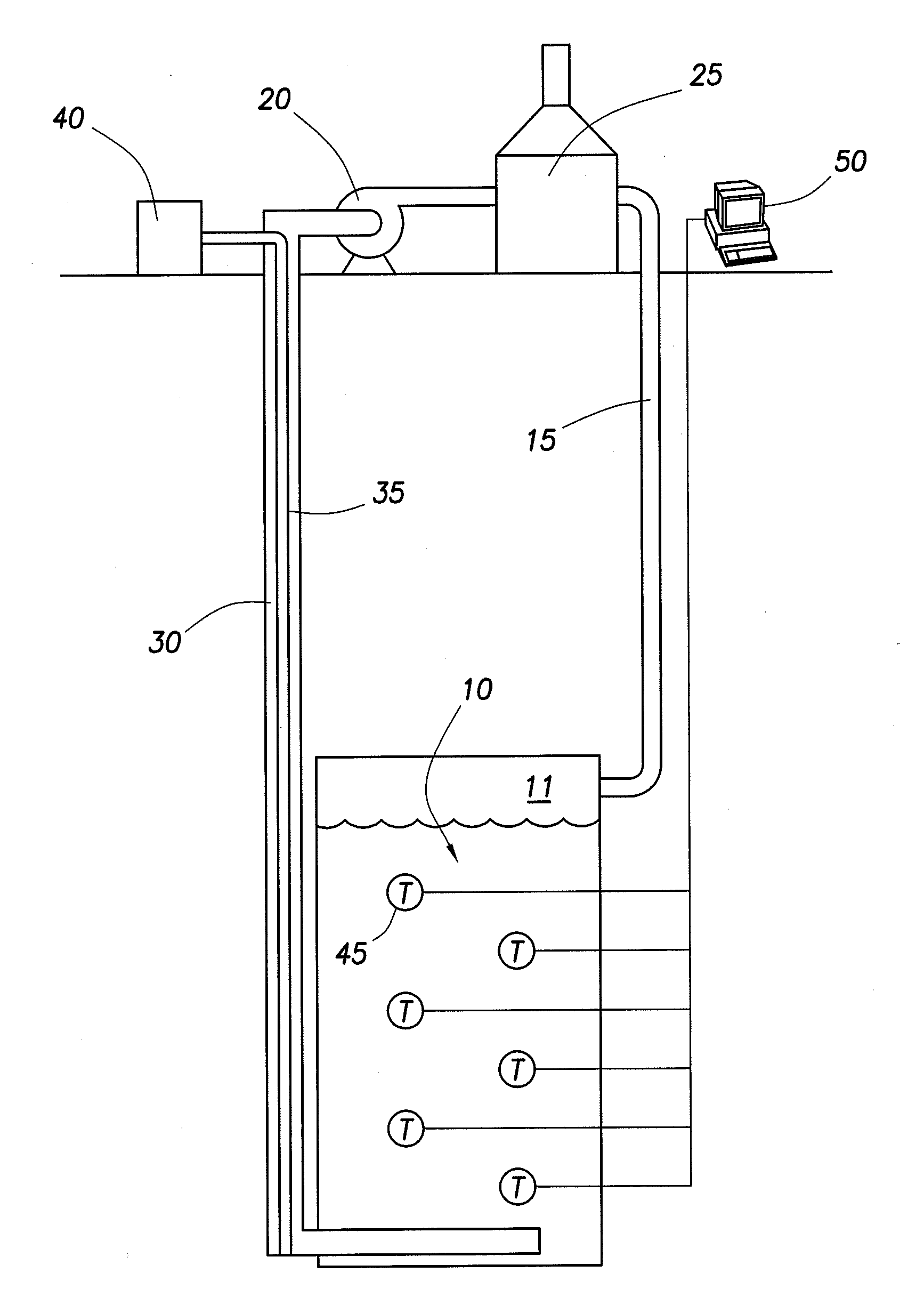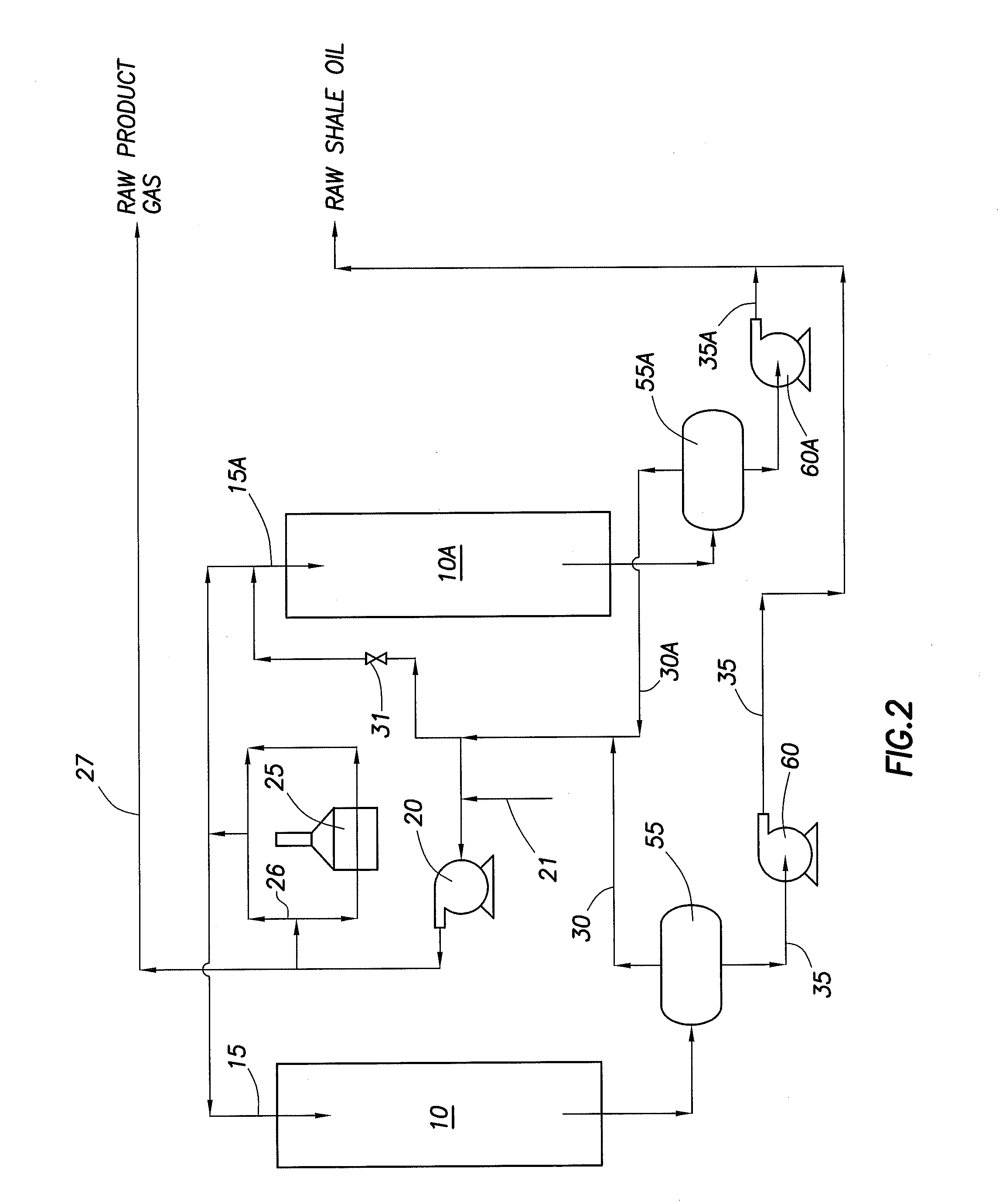Recovery of Hydrocarbons From Oil Shale Deposits
a technology of hydrocarbon recovery and oil shale, which is applied in the field of hydrocarbon recovery, can solve the problems of oxygen depletion of the remaining gas in the retort, and the inability to recover hydrocarbons from oil shal
- Summary
- Abstract
- Description
- Claims
- Application Information
AI Technical Summary
Benefits of technology
Problems solved by technology
Method used
Image
Examples
Embodiment Construction
[0014]Turning now to the preferred arrangement for the present invention, reference is made to the drawings to enable a more clear understanding of the invention. However, it is to be understood that the inventive features and concept may be manifested in other arrangements and that the scope of the invention is not limited to the embodiments described or illustrated. The scope of the invention is intended only to be limited by the scope of the claims that follow.
[0015]Turning to FIG. 1, an oil shale retort is generally indicated by the arrow 10. The retort 10 has been formed by removing a portion of the oil shale and then rubbilizing oil shale in a formation within a defined volume. The defined volume forms an underground retort or an in-situ retort and the rubbilizing is accomplished by drilling a pattern of holes into the formation and subjecting the formation to explosions which break up the formation. Preferably about 20% of the shale has been removed at various elevations with...
PUM
 Login to View More
Login to View More Abstract
Description
Claims
Application Information
 Login to View More
Login to View More - R&D
- Intellectual Property
- Life Sciences
- Materials
- Tech Scout
- Unparalleled Data Quality
- Higher Quality Content
- 60% Fewer Hallucinations
Browse by: Latest US Patents, China's latest patents, Technical Efficacy Thesaurus, Application Domain, Technology Topic, Popular Technical Reports.
© 2025 PatSnap. All rights reserved.Legal|Privacy policy|Modern Slavery Act Transparency Statement|Sitemap|About US| Contact US: help@patsnap.com



